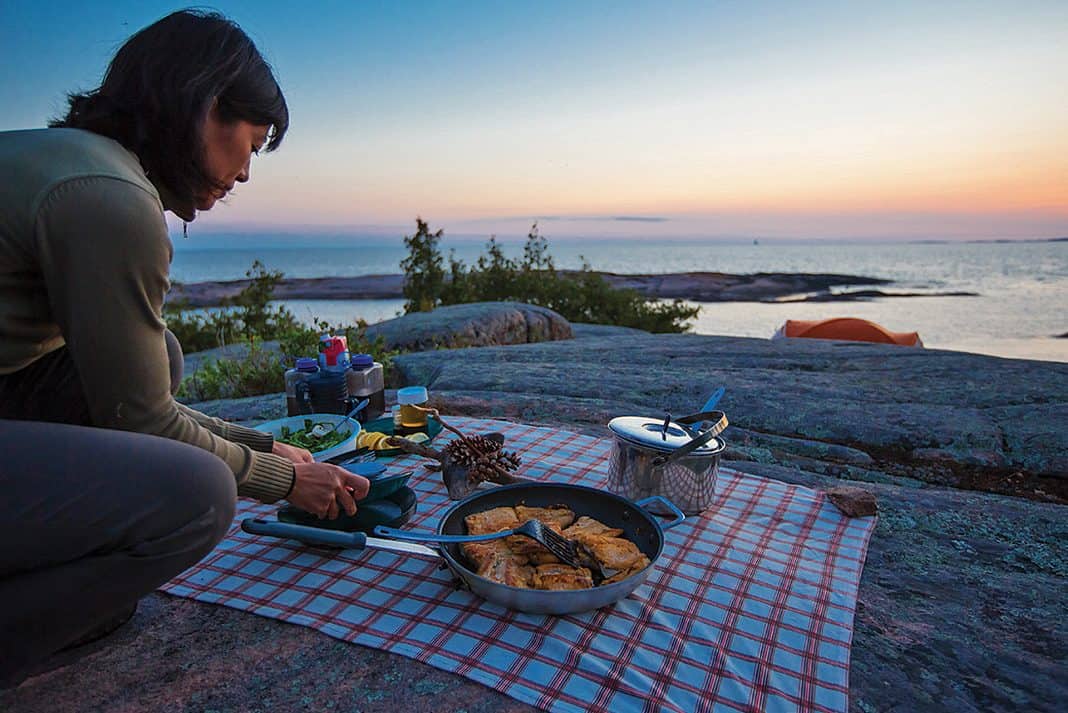We’re not backpackers. Sure, bringing freshies on trip means portaging a few more pounds, but it’s a small price to pay to eat a peppercorn steak accompanied by a loaded, fire-roasted baked potato at the end of a long day. This is canoe tripping—live a little.
The downside of fresh food is its shorter shelf life. Summer temperatures and a squishy pack can leave your treats bruised, sweating or even rotten before you have a chance to enjoy them.
Regardless of which foods you bring, extend their life by following a few tried and true camp foodie rules.
“Keep your food dry and allow airflow,” advises Wendy Grater, owner of Black Feather Outfitters and co-author of Camp Cooking in the Wild.
Tough veggies should be packed in paper bags, which allow for better breathing than plastic bags. Soft fruits and vegetables will need protection to avoid bruising. Pack them in hard-sided cooking pots and bowls.
“Put a light-colored, wet towel on top of your food storage barrel or bin for cooling by evaporation,” adds Grater. She also recommends a light-colored pack for food that will help reflect the rays of the sun, or advises that paddlers line their barrel with cardboard to further insulate, and store food in the shade.
When shopping, opt for fruits and veggies that are underripe—they’ll ripen on route. Don’t wash or cut food until you’re ready to prepare the meal, as this increases the rate of spoilage. For meat lovers, freeze your fare unless you’re planning on eating it the first day.




